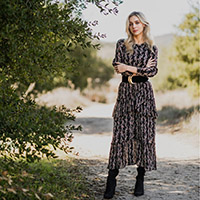Video: How to fix overexposed images in 3 steps in Adobe Lightroom
posted Saturday, January 29, 2022 at 6:30 AM EST

If you accidentally blow out an image – and who doesn't do that occasionally? – there are different ways you can try to save the image. You don't need to instantly delete it. Photographer Pye Jirsa of SLR Lounge shows how to fix an overexposed image in Lightroom in three simple steps. The video is part of SLR Lounge's 'Master Your Craft' series for Adorama TV.
If you'd like to follow along with Jirsa, you can download the exercise files used here. If you're trying to fix a blown out portrait, you may want to first adjust white balance to ensure that skin tones are accurate. With a blown out image, sometimes the white balance can be a bit inaccurate for skin tones. The next step is to reduce the top of the Tone Curve to bring down the highlights and add back midtone contrast. This gives your photo a bit of a matte look while reducing the blown out area from bright white. A light touch is ideal here as you don't want to introduce posterization.
The second step is HDR + HSL. This means that you're giving a single photo an HDR (high dynamic range) look while also adjusting hue, saturation and luminance. The HDR part of the process comprises reducing highlights and increase shadows to balance the image out. The HDR approach can have a negative impact on color accuracy and saturation, so that's where HSL adjustments come into play.
The third step is to make localized exposure adjustments over your subject. In the most recent release of Lightroom Classic, Adobe has added a 'Select Subject' tool and it works very well at making an accurate mask of your subject, allowing for simple selective, precise adjustments. You can also use luminance masks, chrominance masks or brushing techniques to select your subject or refine an automatic selection. You can use selective exposure adjustments on your subject to further balance your photo.
By combining all three techniques, you can achieve a beautiful final result that tones down the bright white blown out areas in an image while bringing detail back to your subject and creating a more even, pleasing image. If you'd like to read about the technique, head over to SLR Lounge.
(Via SLR Lounge)